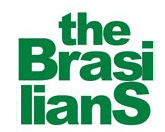Galerie Lelong is holding an exhibition of Grupo Frente until August 5th to August 5th, 2017 in New York City. It is the first in-depth U.S. exhibition of the historic Rio de Janeiro-based artist group. It includes works by Lygia Clark, Hélio Oiticica, Abraham Palatnik,  Lygia Pape, and Ivan Serpa, and sheds light on lesser known members such as Aluísio Carvão, João José Costa, Rubem Ludolf, César Oiticica, and Décio Vieira.Grupo Frente was at the forefront of artist collectives in the region from 1954-56, approaching art through a rigorous
Lygia Pape, and Ivan Serpa, and sheds light on lesser known members such as Aluísio Carvão, João José Costa, Rubem Ludolf, César Oiticica, and Décio Vieira.Grupo Frente was at the forefront of artist collectives in the region from 1954-56, approaching art through a rigorous
Grupo Frente was at the forefront of artist collectives in the region from 1954-56, approaching art through a rigorous commitment to experimentation and social mission. Grupo Frente’s founder, Ivan Serpa, was an emerging abstract painter and art educator at the Museu de Arte Moderna do Rio de Janeiro when he formed the group in 1954. The collective’s core mission was a strict dedication to experimentation with technique and material while maintaining an honest approach based on research. Serpa’s triptych Untitled (1955) is part of a series of textural experiments using alphabetical symbols from typewriters and demonstrates his interest in serial forms and repetition.Many artists in Grupo Frente later
Many artists in Grupo Frente later pioneered key visual movements and continue to be leading art world figures. Lygia Clark, Hélio Oiticica, and Lygia Pape’s innovative studies of line, form, and color were fundamental to the formation of the groundbreaking Neo-Concrete movement (1959-61).Clark’s Superficie
Clark’s Superficie modulada (1956) explores the opening of space on a two-dimensional surface through planes separated by a tight  fissure — a concept that the artist would unfold into the third dimension under Neo-Concretism. Similarly, Oiticica’s gouaches on cardboard demonstrate an intuitive understanding of color and sensitivity to the rhythm that he would later translate into physical space. Through her Tecelares, Pape proposes an alternative function for woodcuts, then considered a craft tradition; medium becomes a protagonist in these spatial investigations, as the texture of the woodblock becomes a compositional element.The exhibition introduces many artists whose work has rarely been shown in New York, such as
fissure — a concept that the artist would unfold into the third dimension under Neo-Concretism. Similarly, Oiticica’s gouaches on cardboard demonstrate an intuitive understanding of color and sensitivity to the rhythm that he would later translate into physical space. Through her Tecelares, Pape proposes an alternative function for woodcuts, then considered a craft tradition; medium becomes a protagonist in these spatial investigations, as the texture of the woodblock becomes a compositional element.The exhibition introduces many artists whose work has rarely been shown in New York, such as
The exhibition introduces many artists whose work has rarely been shown in New York, such as Rubem Ludolf’s, João José Costa, and Décio Vieira, who is relatively unknown in the U.S..
Grupo Frente arrives at a time of increasing attention to Latin American artists and their often overlooked contributions to twentieth-century art.
Grupo Frente artists who have had recent solo exhibitions in New York include Lygia Clark’s The Abandonment of Art, 1948-1988 at MoMA and Modulated space at Luhring Augustine, Hélio Oiticica’s To Organize Delirium at the Whitney Museum of American Art, and Lygia Pape’s A Multitude of Forms at The Met Breuer.
An exhibition catalog accompanies Grupo Frente, featuring an introductory text by Luiz Camillo Osorio, Professor at the Pontífica Universidade Católica do Rio de Janeiro (PUC-Rio), curator and art critic.
More Information about the exhibition: www.artrabbit.com/events/grupo-frente

